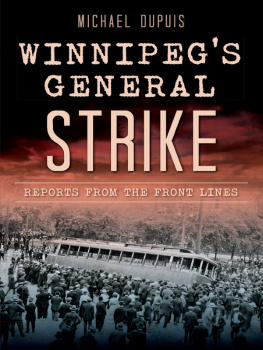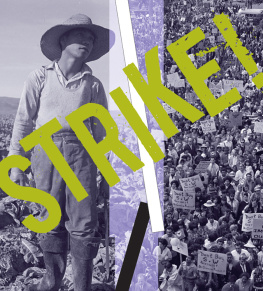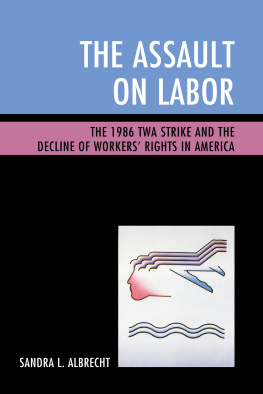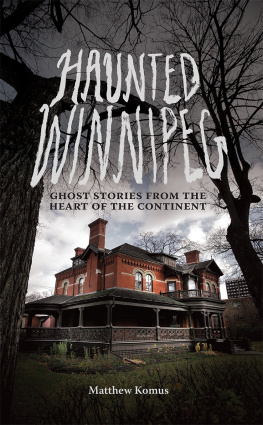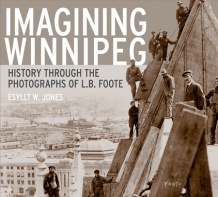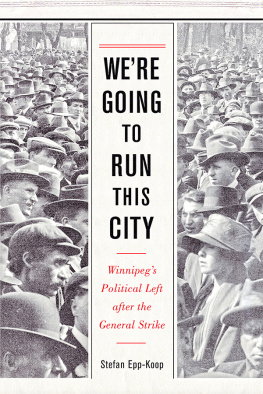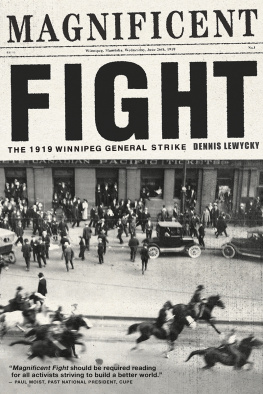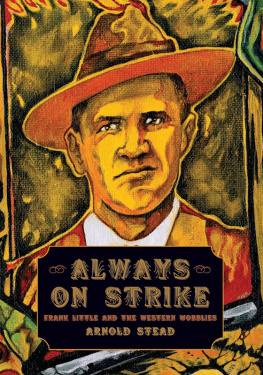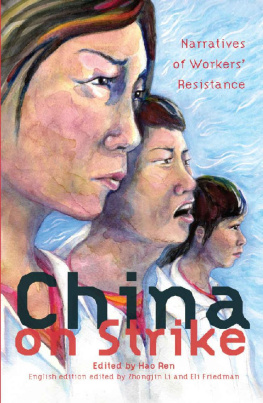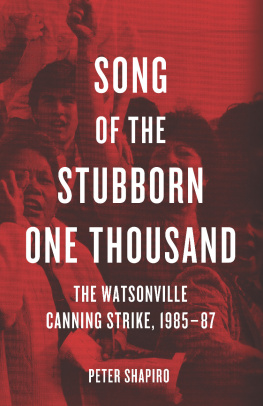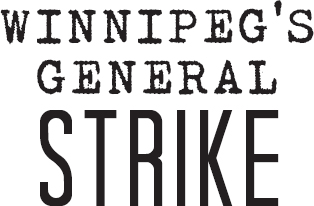

Published by The History Press
Charleston, SC 29403
www.historypress.net
Copyright 2014 by Michael Dupuis
All rights reserved
First published 2014
e-book edition 2014
ISBN 978.1.62584.831.4
Library of Congress Cataloging-in-Publication Data
Dupuis, Michael.
Winnipegs general strike : reports from the front lines / Michael Dupuis.
pages cm
Includes bibliographical references and index.
print edition ISBN 978-1-62619-339-0
1. General Strike, Winnipeg, Man., 1919. 2. General Strike, Winnipeg, Man., 1919--Press coverage. I. Title.
HD5330.M36D87 2014
331.89250971274309041--dc23
2014011083
Notice: The information in this book is true and complete to the best of our knowledge. It is offered without guarantee on the part of the author or The History Press. The author and The History Press disclaim all liability in connection with the use of this book.
All rights reserved. No part of this book may be reproduced or transmitted in any form whatsoever without prior written permission from the publisher except in the case of brief quotations embodied in critical articles and reviews.
CONTENTS
FOREWORD
How refreshing to be reminded that bloggers did not invent conspiracy theories. Nor were they the first to harbour a mistrust of the mainstream media. Bloggers did not invent paranoia, although it often seems that way. That was alive and well in the midst of the 1919 Winnipeg General Strike. It is interesting to ponder how the strikes outcome might have been different had those who opposed it not convinced themselves the strike was a plot by Bolshevists to bring Russian-style revolution to Canada.
Oh the Reds, the Reds, Reds in our streets, anti-strike media cried. Surely the fear that was whipped up went a long way to prodding the government to call out the troops to charge the strikers and their supporters in their final gathering, the silent parade down Main Street. Certainly, fear was the driving force behind the assault on protesters at that silent parade that earned that day the name Bloody Saturday.
Did the powers-that-be really believe in the Red threat? Or were their efforts merely to turn the public against the strike? It is amazing how people can behave when their livelihood is threatened. And the strike did threaten the order of things. Life in the mansions on Winnipegs genteel Wellington Crescent was worlds away from the horrific living conditions in the citys North End. That was what the strike was really abouta living wage, not a revolution.
Its easy to see that now. We have the benefit of knowing the outcome of the provincial inquiry held in the weeks after the strike. Judge H.A. Robson found that the strike was a reaction to low wages and high cost of living. And we know that historian Donald Masterss 1949 investigation determined there was no Bolshevik backing to the strike, a fact seldom disputed by other historians.
Knowing these two facts makes it easy to judge which of the newspaper reports had it right: the strikers paper or those opposed to the strike. The strike was about what the strikers and their newspapers said it was: the right for labour to organize. That renders this books structure so interesting.
Michael Dupuis has interspersed reports from the strikers newspapers with reports from those opposed. Sometimes that creates amusing moments. The strikers papers urged workers to do nothing, to win by simply doing nothing, while the anti papers cited the Citizens Committee of One Thousand urging that something must be done.
Some reports clearly tell both sides of the story. One reporter takes the reader on a walk through the Labor Temple, where the Strike Committee gathers, and then through the headquarters of the Citizens Committee of One Thousand. The writer contrasts the opposing sides clothesstrikers doff their overalls in favour of their Sunday best, and on anti-strikers: the Sunday suit of the striker has given way to the tailors best.
Too few Canadians know the story of the Winnipeg General Strike; even fewer understand its significance. Winnipegs General Strike: Reports from the Front Lines offers a view of what the residents of Winnipeg, of Canada and of the world read about the strike day by day. Its a history lesson from which we can all benefit.
JULIE CARL
Deputy Editor
Winnipeg Free Press
PREFACE
The idea for this book developed from my 1973 MA thesis The Response of the Toronto Daily Press to the Winnipeg General Strike. In late 1972, I interviewed septuagenarian Graham Spry and octogenarian Charles Plewman, both of whom had experienced the strike firsthand. There are some events so intense they are never forgotten, and this was certainly the case for Spry and Plewman with respect to the 1919 strike. Fifty-three years later, they retained vivid memories of the event. Spry had been acquainted with not only several of the disputes labour leaders but also many of Winnipegs newspapermen, especially John Dafoe, the longtime editor of the Manitoba Free Press. As well, during the strike Spry had been a six-dollar-a-day special constable. Between 1917 and 1921, Charles Plewman was boys secretary of the Winnipeg YMCA. He was also the younger brother of Toronto Daily Star reporter William Plewman, who was sent to cover the strike.
As I approached the end of a teaching career in 2004, I returned to my interest in the strike. I spoke with ninety-two-year-old George Plewman, nephew of William Plewman. Then I contacted strike historian Jack Bumsted, who encouraged me to write about the events press coverage, a subject he acknowledged needed exploration. Given Professor Bumsteds support, in 2005 I wrote an article for Manitoba History on the strikes reportorial and editorial coverage by the Toronto Daily Star. Soon after, I met Robert and Murray Conklin, the grandsons of John James Conklin, who in 1919 was a veteran newspaperman with the Manitoba Free Press and during the strike a freelance writer (stringer) for several Canadian daily papers.
While undertaking further strike research in Winnipeg during 2006, I met CBC producer Andy Blicq, who was preparing Bloody Saturday, a television documentary on the strike that later aired in June 2007. Andy took me on a tour of 1919 strike locales, including the CPR train station (now a First Nations Centre), Vulcan Iron Works, Hells Alley, the Winnipeg Telegram building, the Manitoba legislature and the Ukrainian Labor Temple. In 2010, I began collaborating with Winnipeg producer Danny Schur on his documentary concerning the contradictory evidence surrounding the shooting death of immigrant Mike Sokolowski during the strikes June 21 riot. Schurs Mikes Bloody Saturday premiered in Winnipeg in October 2011. Finally, in 2013, I was approached by The History Press to write a book on the strike from the viewpoint of the journalists who experienced and wrote about the event.
In Communities of Journalism, David Nord observed that Historians look back for origins; journalists look ahead for outcomes. As Winnipegs General Strike: Reports from the Front Lines combines elements of history and journalism, it is my hope that the book interests professors of history and journalism, students of each discipline, journalists, members of the labour movement, strike aficionados and the general public.
A final note: the press material presented in this book contains or spellings as used in American newspapers for such words as
Next page
